

Did you know the Netherlands is quietly leading a high-tech manufacturing revolution? From groundbreaking innovations to precision engineering, this small country is making waves in industries you might not expect.
In an era where technological advancement is crucial, understanding the core of high-tech manufacturing has never been more important. Learn why the Netherlands is at the forefront and the shocking facts behind its rise.
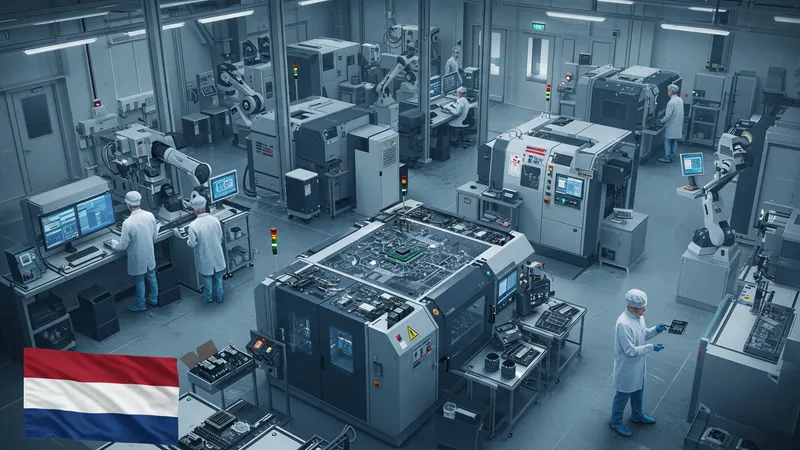
The growing demand for ever-faster devices is something we’ve all felt, but have you ever stopped to consider how those are built? The Netherlands, with its unparalleled precision technology, crafts the machines that produce semiconductors, the building blocks of our digital world. Strange as it sounds, the same fields that once hosted windmills are now making way for tech giants like ASML to compete with Silicon Valley. But that's not even the wildest part...
What makes this even more surprising is the sheer level of expertise packed into a country known for its tulips and cycling routes. With meticulous attention to detail and an unmatched drive for innovation, Dutch engineers are pushing boundaries in ways that leave even seasoned experts awestruck. How do they consistently outpace more resource-rich countries? Unveiling that secret will alter your perception of technological progress, but this is only scratching the surface...
The next chapter in this manufacturing marvel is just a scroll away. What happens next shocked even the experts…
Imagine a world where precision in manufacturing holds the key to technological advancement. The Netherlands has turned this into reality—blurring the lines between possibility and impossibility with its precision engineering. Decades ago, Dutch firms took a bold leap, investing not just in machinery, but in the people operating them. This vision set off a chain reaction, creating a robust ecosystem where every micro-measure counts. Trained experts dissect each process, ensuring that even the tiniest error margin is accounted for. But there's a twist you wouldn't see coming...
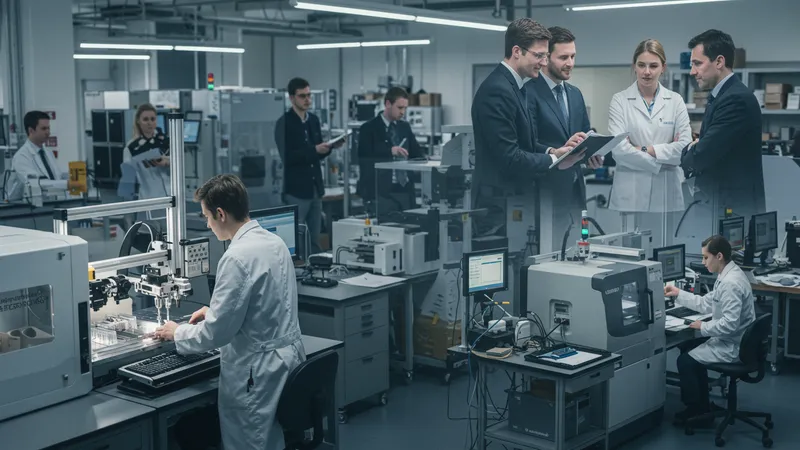
Delving deeper, there's a strong, perhaps unexpected, alliance between educational institutions and the tech industry here. Collaborations foster an ongoing exchange of ideas, fueling relentless innovation. Universities are akin to incubators, continuously feeding the industry with fresh, skilled talent ready to tackle tomorrow's challenges. But the real edge comes from their incredibly practical approach to learning. Intriguingly enough, they set out to pioneer areas not initially associated with high-tech like photonics and nano-engineering. What you read next might change how you see this forever.
Then there's the tech-transfer miracle. Companies often struggle to convert research ideas into marketable products. Enter the Netherland's university-spinoff model—a well-oiled machine of tech transfer that sets new standards for the globe. From applied physics departments springing up as tech enterprises to chemistry labs rolling out new materials, the alchemy here is nothing short of remarkable. And there's more to the tale of this technological powerhouse...
Drilling down to the grassroots, there's a culture of ambitious experimentation. The Dutch aren't just hitting targets—they're constantly recalibrating and innovating new ones to hit. This persistent push for improvement builds momentum that keeps them ahead of the curve, outpacing competitors. But there's one more twist that might take you by surprise. Could their success blueprint work globally? Only time will tell...
When you think of high-tech manufacturing powerhouses, does the Netherlands come to mind? If not, perhaps it should. Home to industrial giants like ASML and Philips, the country punches well above its weight class on the global tech stage. ASML, for instance, specializes in lithography machines, indispensable for creating nearly all the world's chips. Without these critical tools, our gadgets would remain in the realm of fantasy. Their impressive role in the tech tapestry exemplifies how big things can come from small places. But there's more to their success than cutting-edge technology...
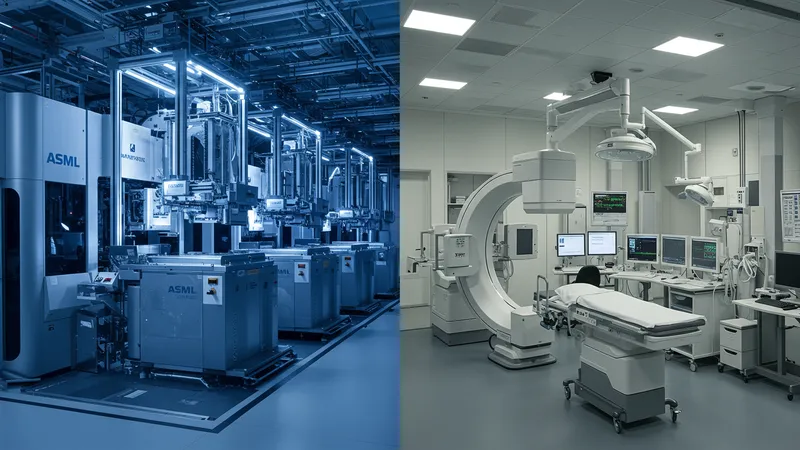
Turning our attention to Philips, traditionally known for consumer electronics, the company has reinvented itself. Today, it's a leader in health technology, focusing on innovations like real-time patient monitoring and advanced medical imaging. Philips’s transformation is a testament to the Dutch penchant for adaptability and foresight. Through rigorous research and development, they've managed a seamless pivot in an ever-evolving market. Their journey is less a chapter and more a series of inventive plot twists. What's fascinating is how their business model could influence industry norms worldwide.
Enter small enterprises, the unsung heroes of Dutch tech. While the behemoths grab headlines, it’s the slew of nimble startups peppering the landscape that are engineering the next wave of breakthroughs. These companies, often offshoots of university research, harness the potential of cutting-edge science in fields ranging from artificial intelligence to biochemistry, creating unique economic value. Their collaborative spirit and innovative zeal make them ripe for partnership, especially with global tech firms eager to tap into their niche expertise. But there's a hidden dynamism weaving through these firms that's even more captivating...
Collaborations with foreign companies not only solidify the Netherland's high-tech reputation but accelerate the pace of innovation. Be it through joint ventures or research partnerships, the Dutch are quite literally rewriting the rules of engagement on the global tech stage. They set the standard by working smarter, not just harder. The real scoop, however, lies in observing their balance between tradition and tech-savviness—a playbook that surprisingly few have managed to emulate. As we delve further, expect more revelations to unfold...
The Netherlands takes educational innovation to a whole new level, a fact often underappreciated on the international stage. At the core of this is a progressive education system that seamlessly blends theory with practice. Universities like Delft and Eindhoven prioritize applied sciences, equipping students with the tools to become industry leaders. But don’t be fooled into thinking this is your typical textbook education. The Dutch have transformed learning into a hands-on experience where students engineer their dreams into reality. But here's an unexpected twist in their educational model...
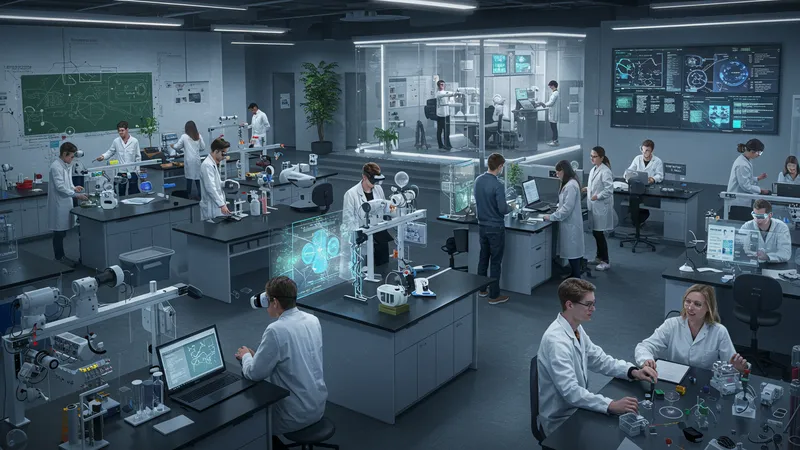
Picture this: a student-led startup incubator sprouting from a university physics lab. This scenario is a common reality in Dutch education. Students engage with industrial projects early on, a practice that not only hones their technical skills but instills a risk-taking ethos vital for innovation. What sets the Dutch education system apart is its readiness to challenge status quo thinking, propelling students into real-world problem-solving from the get-go. The result is a continuous influx of job-ready graduates prepared to tackle the complexities of modern high-tech industries, but that's only part of the story.
The focus on lifelong learning is another defining feature of Dutch high-tech education. Professionals are encouraged to keep up with evolving tech trends through constant upskilling and reskilling initiatives. Unlike systems where education stops after university, here learning is viewed as a lifelong journey. Companies invest in employee education, fostering an environment where knowledge is continually refreshed and creativity is highly prized. This relentless pursuit for knowledge contributes to a uniquely innovative workforce. There's a deeper layer to this though...
What ties all these elements together is collaboration among educational institutions, industry, and the government. This triad forms a robust support network fueling the Dutch high-tech engine. Subsidies for research initiatives along with a welcoming policy for international students ensure that global talent flows into the country. What you read next might just challenge how you perceive the building blocks of tech development on a global scale. The more you dig, the richer the story becomes...
Sustainability isn't just a buzzword in the Netherlands—it's woven into the very fabric of their high-tech manufacturing ethos. As industries globally grapple with pressure to go green, Dutch manufacturers are already spearheading eco-friendly innovations. From incorporating renewable energy sources to developing biodegradable materials, they're committed to reducing carbon footprints. These advancements don't just meet regulatory guidelines—they often exceed them, setting a new benchmark for environmental responsibility. But there’s an intriguing twist behind these green technologies...
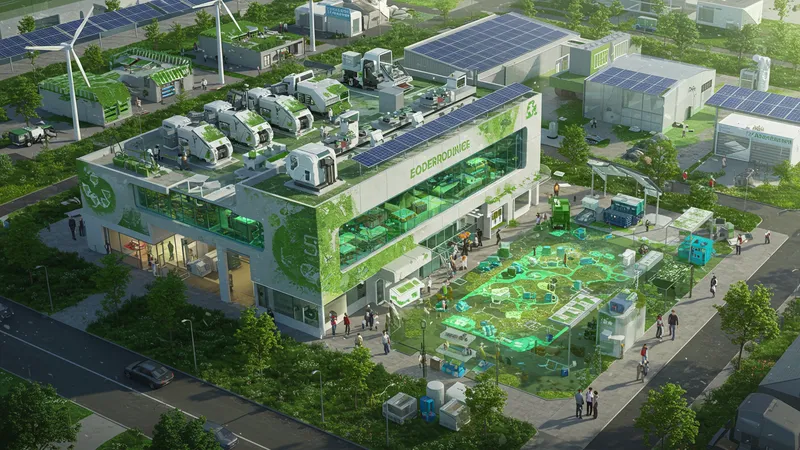
How do Dutch manufacturers strike the balance between high-tech production and eco-friendliness? The key lies in their unique approach to lifecycle thinking. It's not just about minimizing waste—it's about reimagining the entire production process for maximum efficiency and minimal environmental impact. This eco-centric vision extends from the initial design phase all the way to end-of-life product disposal, ensuring that sustainability is woven into every step of production. The crux of this partnership is innovation—but not the kind you’d typically expect...
This new wave of green tech is bolstered by cross-industry collaborations. Dutch manufacturers often work hand-in-hand with environmental scientists and policy makers to develop pioneering solutions. Biodegradable electronics, energy-efficient machinery, and sustainable industrial processes are becoming the norm rather than the exception. Innovation hubs across the Netherlands serve as proving grounds for these cutting-edge technologies, drawing interest from global partners seeking green solutions to emulate. The real magic happens at these intersections of knowledge—and the results are nothing short of transformative...
The ripple effect of these initiatives is undeniable. Dutch companies are not only nurturing a new age of sustainable technologies but are also redefining what’s possible in the realm of high-tech manufacturing. By championing transparency, accountability, and a forward-thinking attitude, they've seized their rightful place on the global sustainability stage. The tale of Dutch ingenuity doesn’t end here, though, and the next chapter is set to rewrite the narrative of what's feasible when technology meets nature. Get ready for mind-expanding revelations to come...
The Dutch government plays a pivotal role in bolstering its high-tech sector, operating as a catalyst for both innovation and growth. Through strategic investments and policy frameworks, it ensures that the high-tech manufacturing sector remains a competitive force on the global stage. Their focus on creating a digitally-advanced economy through initiatives like the Top Sector Alliance for Knowledge and Innovation (TKI) demonstrates a long-term vision for technological progress. But here’s what might shock you about their approach...

The government's strategy doesn’t just focus on direct financial support—it's about removing barriers. Simplified regulatory frameworks have been introduced to encourage startups and SMEs to innovate without the traditional bureaucratic restrictions. Moreover, an emphasis on cybersecurity investments ensures that as technology evolves, so does the infrastructure supporting it. The government's support isn’t reactive but anticipatory, paving the way for a resilient tech ecosystem, and there's a compelling depth to their foresight you wouldn't expect...
Another unique feature of the Dutch government’s involvement is its investment in public-private partnerships. By fostering collaborations between academia, government, and industry, these partnerships facilitate the seamless transfer of technology from research to commercial applications. Subsidies for these partnerships are not just financial windfalls, but strategic injections meant to ensure sustainable growth across the tech landscape. These alliances enhance the country's innovative capabilities on a truly collaborative platform. The ripple effects of this strategy are game-changing and far-reaching...
Perhaps most intriguingly, there is an overarching goal of inclusivity throughout these initiatives. The efforts are not only tech-focused but also socially oriented, aiming to bridge innovation with societal well-being. Programs target digital literacy and employment opportunities across various demographics, ensuring that the benefits of the tech revolution reach all corners of society. The approach signals a future where tech advancements align harmoniously with societal needs. As the story unfolds, we're introduced to more elements redefining the tech world's global landscape...
In chasing high-tech advancements, the Netherlands faces certain challenges that may give even the most confident industry leaders pause. As they push the boundaries of what’s technologically possible, they grapple with issues like talent shortages, which could stifle growth potential. While their education system is evolving to meet demand, the sheer pace of industry expansion means the need for skilled professionals often surpasses the supply. But there’s a surprising element to how they're tackling this issue...

An emphasis on international collaboration is helping turn the tide against potential talent shortages. The Netherlands is increasingly attractive to overseas professionals, skilled workers, and researchers lured by its progressive work environment and high quality of life. Furthermore, initiatives aimed at retaining international graduates from Dutch universities ensure a robust pipeline of future innovators. Still, this solution requires a delicate balance to maintain, especially amid fluctuating geopolitics and evolving immigration policies.
Financial constraints pose another significant hurdle. Developing cutting-edge tech is capital-intensive, and acquiring funds often necessitates a fine blend of public and private investment. Recent economic shifts have put pressure on funding dynamics, prompting companies to explore alternative avenues and mitigative measures like technological collaborations with global powerhouses. These financial partnerships not only alleviate monetary strain but equip firms with the diverse expertise needed to leap over these complex hurdles.
The rapid pace of technological change also calls for agile policies, and adapting regulatory frameworks in time can prove challenging. With technology advancing faster than regulation can keep up, Dutch companies sometimes face the paradox of innovating faster than the legal systems can comprehend or authorize. Addressing these regulatory challenges requires a sophisticated, multi-layered approach that bridges the gap between progress and policy. But what you learn next could forever shift your understanding of these dynamics...
The Netherlands has long been a birthplace of groundbreaking innovations that hold the potential to disrupt not only industries but entire economies. Prefabricated housing solutions and next-gen 3D printing are reshaping the construction industry, signifying a shift towards faster, sustainable building practices. But it’s not just about being ahead of the curve. These innovations herald a future where traditional ways of doing business become relics of the past. However, what stands out is how effortlessly they blend cutting-edge with consumer demand...

In a similar vein, the transport industry has seen radical overhauls with the advent of automated pods and frictionless travel solutions. Companies like PAL-V have responded with flying cars tailored for personal and commercial use, redefining convenience and efficiency. These inventive transport technologies suggest a world where mobility is fluid and barrier-free, fundamentally altering logistics and the daily commute. But what’s more intriguing is the approach to scalability; it’s a strategic game where timing and foresight make all the difference...
The future of food technology is another intriguing area of innovation within the Netherlands. Dutch scientists are at the forefront of lab-grown meat production—an answer to the ethical and environmental challenges posed by traditional livestock farming. Efforts here symbolize a visionary pivot towards sustainability, highlighting the interplay between technology and ethics. Overcoming consumer skepticism remains the primary barrier, yet there's an unexpected openness to adaptations which defies traditional economically-driven resistance.
Such radical disruptions extend into healthcare sectors, with smart wearable technologies advancing towards consumer-grade medical diagnostics, making routine health assessments more accessible and less invasive. Dutch innovation has seen the integration of artificial intelligence into even the minutiae of daily life, creating a new normal where tech and health are interlinked. As more developments come to the fore, the broader implications on global industries are immense, resulting in an ever-evolving landscape civilization must navigate.
The Netherlands is championing a collaborative spirit within the high-tech manufacturing sector that transcends borders. By forging alliances with international partners, Dutch companies are not only broadening their horizons but launching joint ventures to tackle today's most pressing industry challenges. These collaborations inject diverse expertise into the tech ecosystem, ensuring a rich pool of creativity and innovation. But there’s more to the story than just cross-border partnerships...
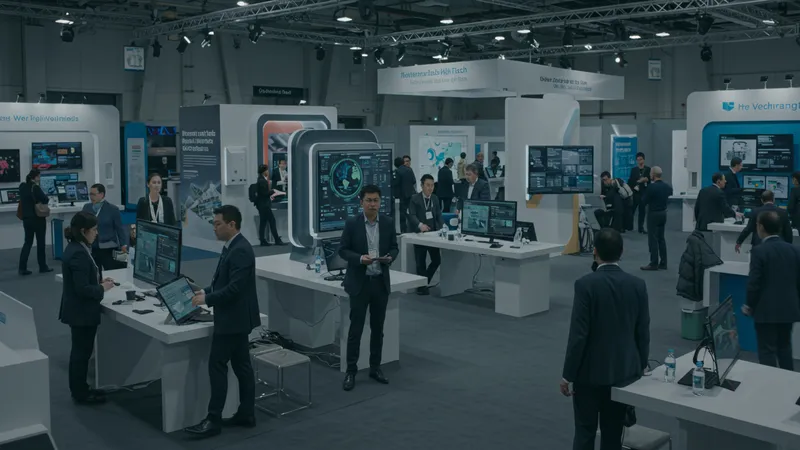
Global collaboration initiatives pave the way for technological breakthroughs by combining resources, insights, and skills from around the world. Netherlands-based companies often partner with Asian and North American tech leaders to develop state-of-the-art technologies that can revolutionize markets. Through such initiatives, the Dutch have positioned themselves as indispensable mediators in technology advancement, accelerating adoption across continents.
What makes these partnerships even more effective is the alignment of values and missions among international partners. Regardless of geographical distance, shared commitment to sustainable, responsible, and inclusive tech forges strong bonds that transcend transient market trends. The result is a seamless attempt to synchronize regional strengths into a coherent strategy with global implications. But cooperative spirit alone is not enough...
Sustainable collaborations often face hurdles like fluctuating geopolitical tensions and trade policies which require adaptability and resilience from these partnerships. While challenges remain, the Netherlands' reputation in fostering cooperative innovation gives it a unique advantage. As these global networks grow increasingly complex, it’s clear that such alliances will continue shaping tech’s future. From this vantage point, there’s an entire universe of potential unfolding—are you ready to be part of it?
The trajectory of high-tech manufacturing in the Netherlands is pointing towards an undeniably exciting future, filled with promise and potential pitfalls. One of the most compelling aspects of this trajectory is the reinvention of traditional practices into innovative solutions that meet modern demands. By integrating technologies like artificial intelligence and machine learning into their workflows, Dutch manufacturers redefine the narrative of efficiency and precision, reshaping industry standards. Yet there’s more at play beneath the surface...
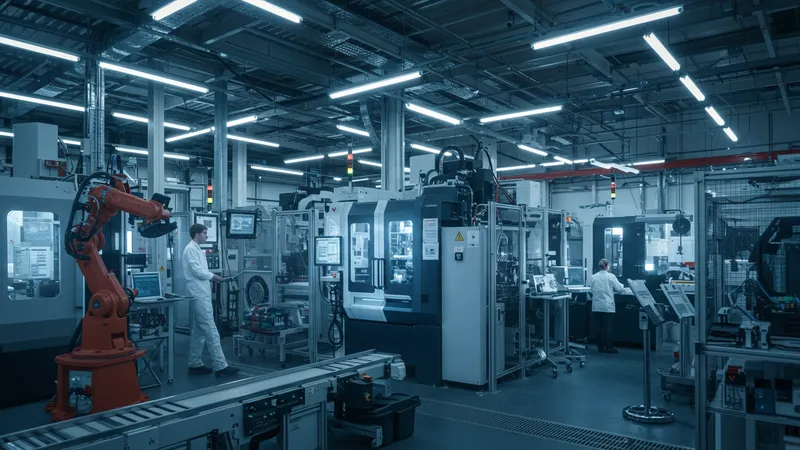
Risks of technological overreach or dependency loom large, and adapting to the rapid pace of advancement is a prevalent concern. As technology blurs the lines between human oversight and machine autonomy, future-oriented regulations become essential. Navigating these challenges involves an astute balance between leveraging advanced tech and ensuring humane conduct within the digital landscape. But unlike anticipated, Dutch enterprises have shown remarkable tact in approaching this balancing act...
Predictive analytics and big data are at the heart of this manufacturing revolution, equipping businesses with new tools to anticipate trends, optimize processes, and refine their offerings continuously. By utilizing advanced data science techniques, companies gain unprecedented insights into consumer behavior and market dynamics, crafting bespoke solutions that establish them as trendsetters in global supply chains. However, ethical data usage remains a tangible thread weaving through this fabric...
This digital frontier raises questions about privacy and data security that must be navigated with care. The Dutch commitment to transparent practices sets a benchmark for others to follow, reinforcing their role as an ethical leader in technological evolution. As the story continues to unfold, these progressive practices highlight the interplay between innovation, oversight, and ethical parameters which define the Dutch tech landscape. Are you curious about what lies ahead in this transformative journey?
The relationship between high-tech innovation and societal development in the Netherlands paints a compelling picture of mutual reinforcement. More than just a technological hub, the Netherlands embodies a model where tech advancement cultivates social betterment, intertwining seamlessly with community life. This connectivity creates a synergy that amplifies social innovation essential for a prosperous future. Yet, there’s a fascinating undercurrent shaping this tech ethos...
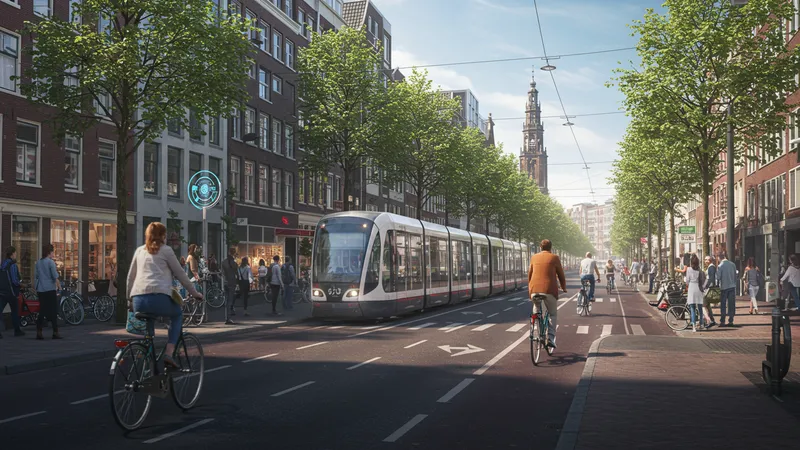
The social impact of high-tech growth manifests in realms as crucial as urban planning and public services. Here, smart city technologies optimize everything from transit systems to civic administration, ensuring higher living standards and sustainable urban ecosystems. This forward-thinking integration is a testament to the Dutch commitment to bridging tech-savvy solutions with social realities, making daily life more efficient and sustainable.
The Dutch tech ecosystem thrives on inclusive growth, expanding opportunities for diverse societal segments, and acting as a force for paralleled social innovation. Programs enacted to democratize tech access have expanded digital literacy and fostered digital inclusion, forging pathways for the underrepresented to participate in the tech economy. The blend of technological and social innovation is curated to maximize both economic and community returns, with a clear message that tech excellence should benefit all.
Continuing this synthesizing path, the next wave of Dutch tech endeavors promises an even deeper societal imprint. From enhancing educational frameworks to bolstering healthcare systems, the possibilities are as expansive as they are transformative. As you delve deeper, the persistent realization surfaces—a solution-driven ethos propels the Netherlands towards a future where technology serves humanistic goals, embodying progress as its core mandate. Are you ready to explore what lies beyond the conventional tech narrative?
While modern high-tech manufacturing in the Netherlands stands at the forefront of innovation, it is deeply rooted in the cultural heritage of the country. Dutch ingenuity and craftsmanship have been celebrated for centuries, echoing from the realms of art, design, and engineering. Today’s tech revolution is a natural evolution of these historical talents. Just as past masters broke new ground in perspective and painting, today’s engineers push boundaries in technology and precision. Yet there's an unseen connection to discover...
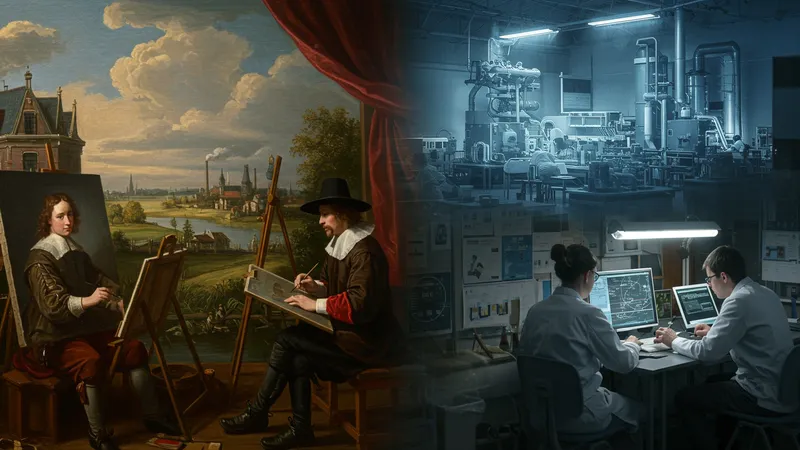
Stereotypically, Dutch paintings, particularly those from the Golden Age, reflect precision and attention to detail—traits seamlessly transferred to modern engineering practices. This cultural continuity underlies the Netherlands’ penchant for accuracy and above-par quality often associated with their high-tech goods and solutions. These age-old cultural values resonate within the high-tech sector, subtly steering innovation’s course.
The liberal traditions in art and culture have nurtured an environment open to experimentation and unconventional ideas. This openness has historically fostered a climate where radical thinking and innovation could thrive, rooting deeply into the societal fabric. The current wave of technological advancements is merely an iteration of a worldview that challenges norms and champions inventive exploration.
Furthermore, the Dutch embrace of international influences has radically enriched their innovation ecosystem. Throughout history, the Netherlands has been a crossroads of ideas and cultures, integrating them into a cohesive whole while maintaining a distinct identity. This adaptability and assimilation underline modern high-tech practices, proving that even in innovative tech, heritage and history have their place and purpose. Discover how these cultural legacies fuel the nations’ stride toward technological greatness...
Behind the glitz of high-tech advancements, the Netherlands confronts ethical dilemmas that arise from rapid innovation. As technology’s reach extends, ethical considerations in data privacy, AI autonomy, and environmental stewardship demand attention. How do policymakers and industry leaders balance progress with preserving societal values? The intricacies of these ethical challenges present a layered discussion on the future’s moral landscape.

In the domain of data privacy, Dutch firms are setting standards for transparent data usage. Public apprehension over data misuse is mitigated by rigorous policies that prioritize consumer protection and consent. These commitments illustrate a determined effort to shine a light on previously murky areas, creating a tech landscape where privacy aligns with innovation. Yet, there's more complexity hidden behind these regulations...
AI ethics is another challenging arena, with machines gaining more autonomy than ever before. Companies tap into AI capabilities for predictive analytics and decision-making, prompting questions about the limits of machine involvement in critical tasks. Resolving these debates requires a multifaceted approach, incorporating interdisciplinary expertise and continuous dialogue to ensure technology complements rather than overpowers human judgment.
Finally, environmental stewardship is a key concern, with sustainability at the heart of high-tech manufacturing. The balancing act between advancing technology and preserving ecological integrity is delicate, compelling companies to innovate responsibly. Greater transparency and accountability in environmental impact assessments encourage enterprises to prioritize sustainability. How do these ethical considerations evolve alongside technology? Find out how they shape the future landscape...
As the Netherlands propels into uncharted high-tech territories, navigating these new frontiers involves both risk and reward. The country’s embrace of disruptive technologies like quantum computing and biotechnology underlines a forward-thinking approach. Yet, what unfolds in these emerging domains illustrates broader narratives of innovation possibilities and constraints.

Quantum computing is a burgeoning field, with the Netherlands at its vanguard, exploring the immense computational potential that promises to redefine industries. This stepping into the quantum realm is a leap toward faster processing speeds and complex problem-solving capabilities, giving rise to transformative horizons previously in the realm of science fiction. Are we ready for a world redefined by quantum technologies?
Biotechnology, another frontier, reflects the convergence of tech with living systems. Dutch biotech initiatives pioneered groundbreaking treatments and gene-editing technologies, reshaping healthcare’s future. These advancements not only address immediate health challenges but propose long-term solutions to global health issues, showcasing the nimble capability of Dutch innovators. What might these biotech shifts mean for global well-being?
The allure of these emerging technologies is mirrored by intrinsic challenges. Issues of ethical boundaries, sufficient regulation, and comprehensive public discourse remain crucial. As these technologies evolve, addressing inevitable uncertainties is key in maintaining public trust and social license to innovate. As the Netherlands charts its course through these uncertainties, it continues setting international benchmarks in pioneering innovation.
The extraordinary journey of Dutch high-tech manufacturing reveals a tapestry rich with culture, collaboration, and cutting-edge innovation. It unspools a story wherein historical craftsmanship and modern technology shape a nation’s destiny. As the narrative closes, we’re reminded that significant achievements arise when boundaries are continually challenged, revealing insights that propel us forward. The Dutch way has transformed our globe and inspires new generations of innovators to envisage what’s next.
Now’s the time to delve deeper, explore further, and discover the layers of ingenuity within your reach. Share this story if it opened your eyes to the wondrous blend of tech and tradition. Bookmark it for a reminder that innovation knows no limits. Your curiosity is merely the beginning—what will you discover next?